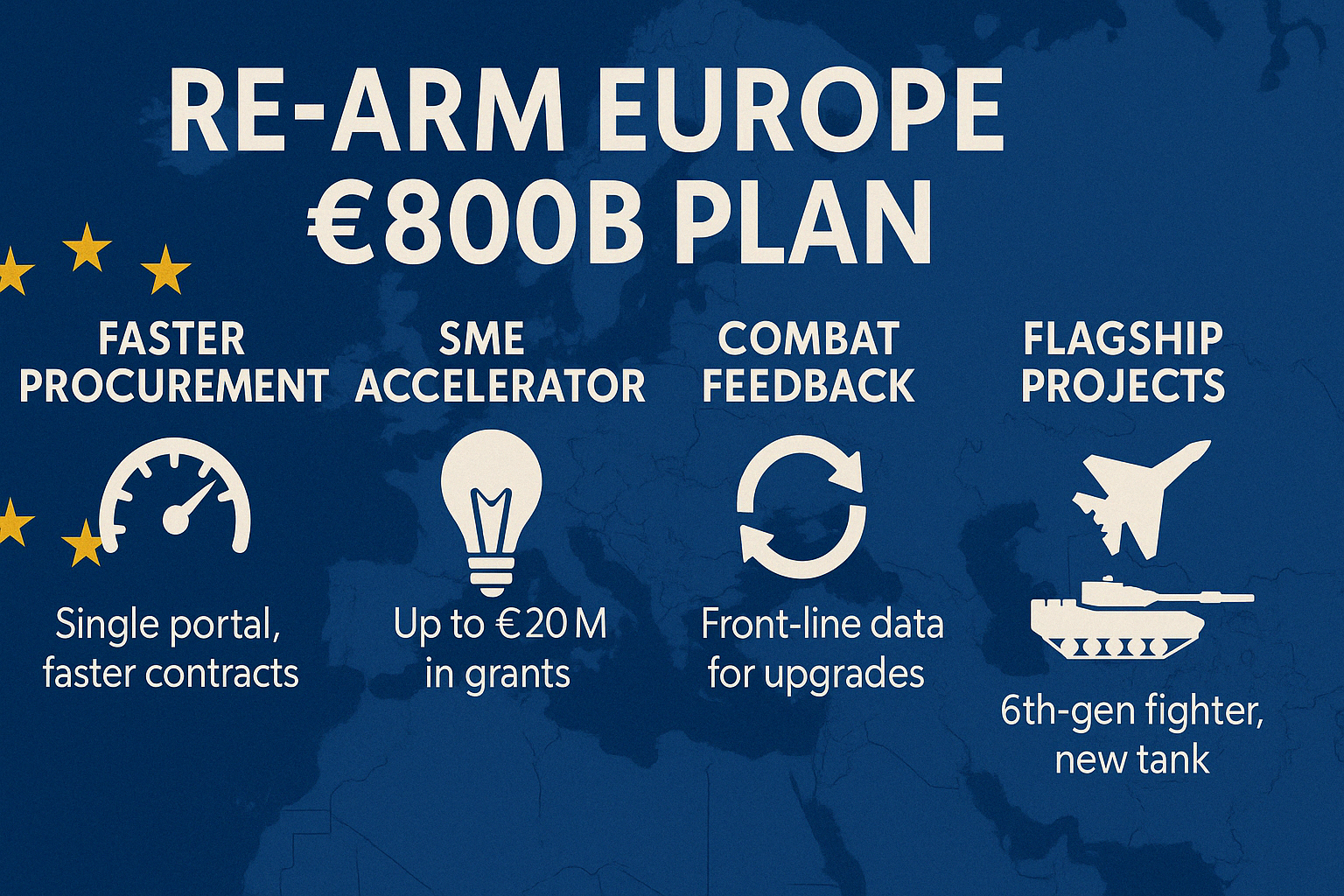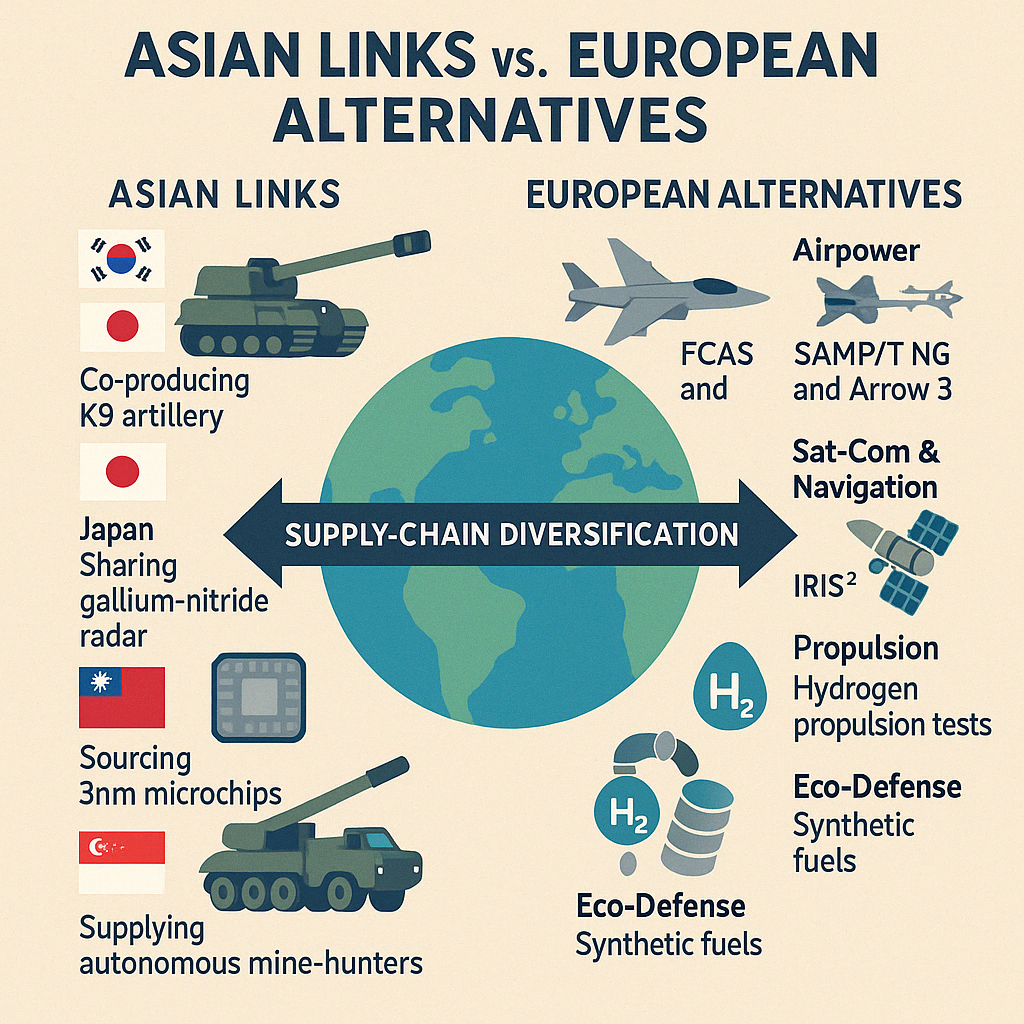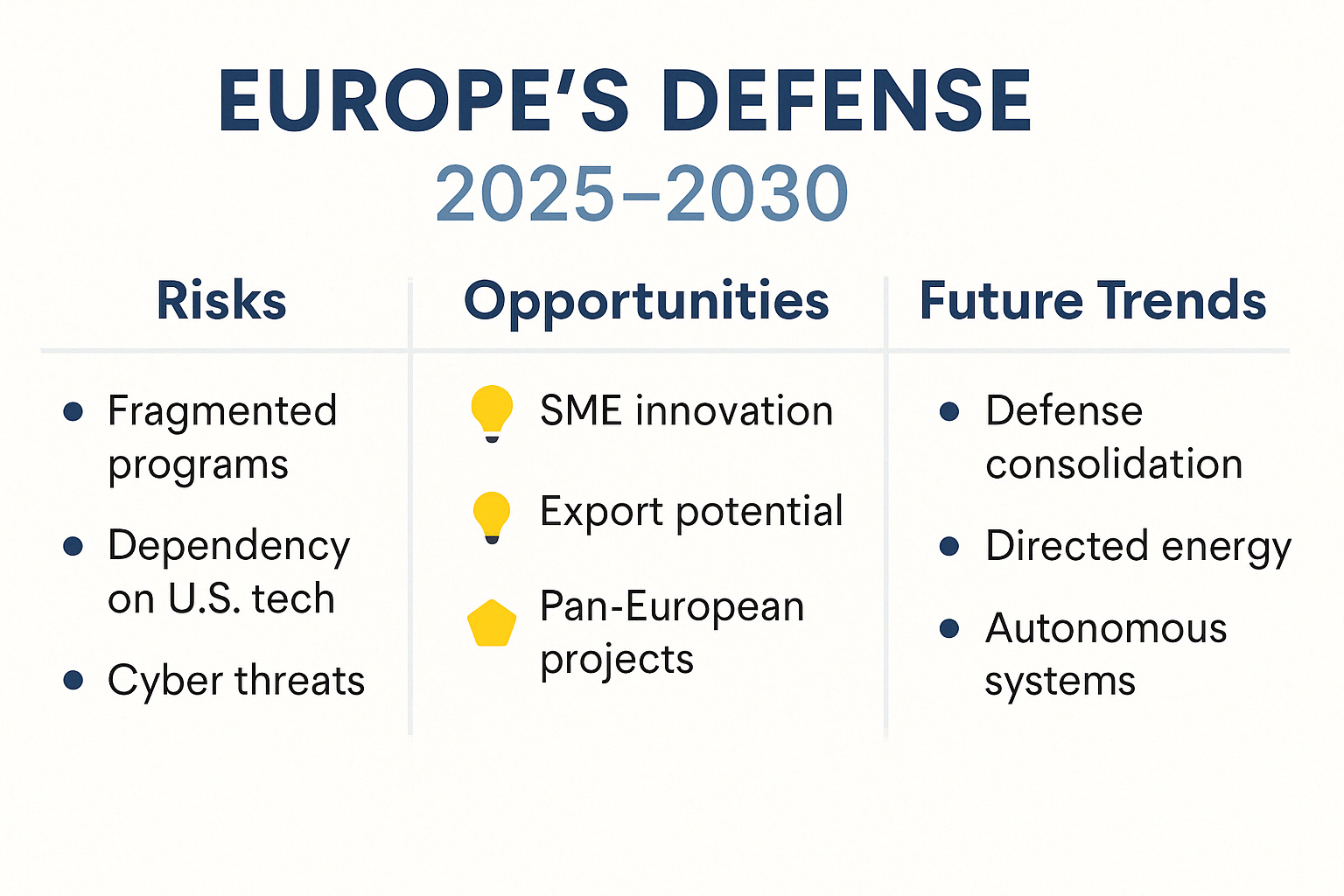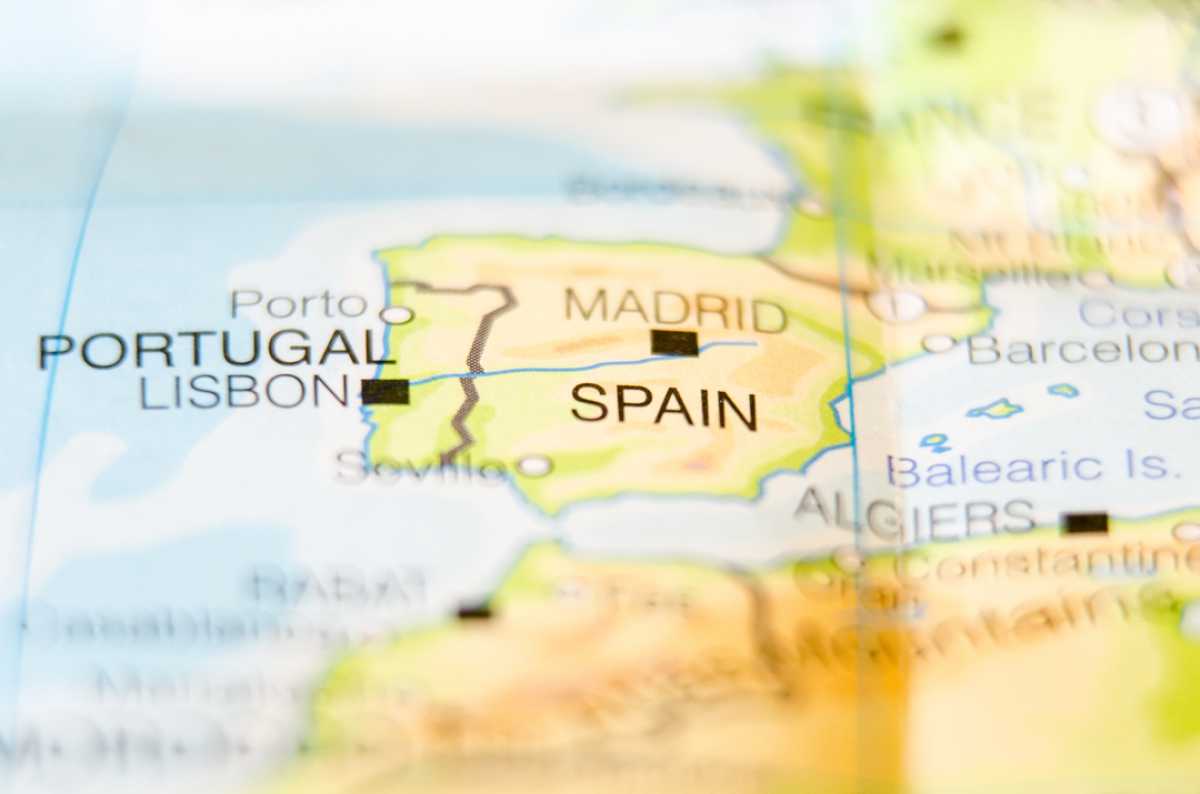Re‑Arm Europe €800 B Plan 💶💥
The Re‑Arm Europe initiative—about €800 billion set aside for 2024‑2032—is designed to turn Europe’s fragmented defense market into a faster, more cohesive engine of hard power.
Faster contracts. A single EU tender portal now handles major buys, with Brussels pressing member states to wrap competitions in under two years. This new pace is already visible: Sweden has ordered IRIS‑T SLS air‑defense batteries, and Spain has green‑lit the Eurodrone program—both on timelines that would have been unthinkable a decade ago.
Backing innovators. Small and mid‑sized firms working on drone swarms, cyber defense, recyclable armor, or green propulsion can tap grants of up to €20 million. The aim is to pull fresh ideas into a sector long dominated by a handful of giants.
Front‑line feedback. Battlefield data from Ukraine is being fed directly into upgrade cycles; Rheinmetall has revised armor packages, and MBDA has tweaked missile seekers within months, not years.
Flagship projects. Roughly two‑fifths of the R&D budget fuels two keystone programs: FCAS, a sixth‑generation fighter led by France, Germany, and Spain, and MGCS, the Franco‑German tank intended to replace the Leopard 2. Smaller “minilab” grants link Baltic drone coders, Italian avionics shops, and Finnish fuel‑cell researchers to these big efforts, spreading the benefits across the union.
In short, Re‑Arm Europe is an investment plan and a culture shift: quicker buys, wider talent, and gear that adapts as fast as the threats.












